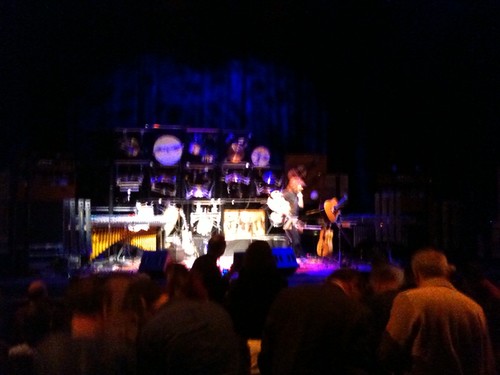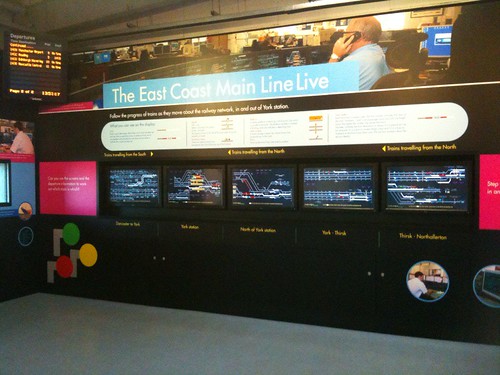
Pat Metheny Orchestrion, originally uploaded by lemon.grass.
I am fairly hooked on Pat Metheny’s music, so I was really looking forward to seeing him live with Orchestrion at the Barbican Centre last night. The atmosphere was good, and I had one of the best seats in the house, 7 rows back and right in the centre of the stalls. The technology is fascinating – lots of solenoids controlling mainly acoustic instruments and some electric guitars. He can control the whole setup from his guitar in almost real time. It’s a great setup. OK, so the technology let him down last night near the end of the concert, and his closing number had to be cancelled; that didn’t matter as we were treated to some more familiar pieces instead. The trouble is that the automated setup has some serious musical limitations which in the end left me feeling that it was frankly boring. Pat’s act used the orchestrion in two distinct modes: pre-programmed, and live. In the pre-programmed mode, computers had previously recorded Pat’s playing of the orchestrion, and on stage he soloed as it accompanied. In the live mode, the automated instruments sounded in response to Pat’s playing, detecting the tones of the notes and playing them on the many percussion and strung instruments in the ensemble.
Player pianos are fascinating devices, as Pat points out, and one can watch them for ages. But frankly one doesn’t look to them to produce inspiring performances. What makes an inspiring performance on stage? The interplay between the players; the way they react to one another and inspire each other to go a bit further; the feeling that we, as members of the audience, are privy to the excitement which flows between the performers. All that is lost with a pseudo-solo performance like this, and worse, the automaton doesn’t read and react to timing and mood changes in the live performance. When Pat starts a soulful solo, and then the orchestrion comes in, it often comes in at the wrong speed. A live backing group would be listening to the soloist and timing their entrance to match his tempo. The opposite problem occurs when Pat leads the performance in the live mode. The detection of which notes are playing and the reaction time of the mechanics leads to a noticable lag between the soloist’s performance and the accompaniment. I did become use to this delay after a while, but it is a serious limitation, compared with multiple performers playing together.
Overall, I found the Orchestrion experience flat and somewhat disappointing. As he freely admits, it’s an experiment, and he’s feeling his way. The most interesting part of the evening was listening to him talking about how it worked, and demonstrating the machine. He has a very pleasant manner and comes across well. I hope I get the chance to see him performing live with live performers soon, so that I can experience the real music.

